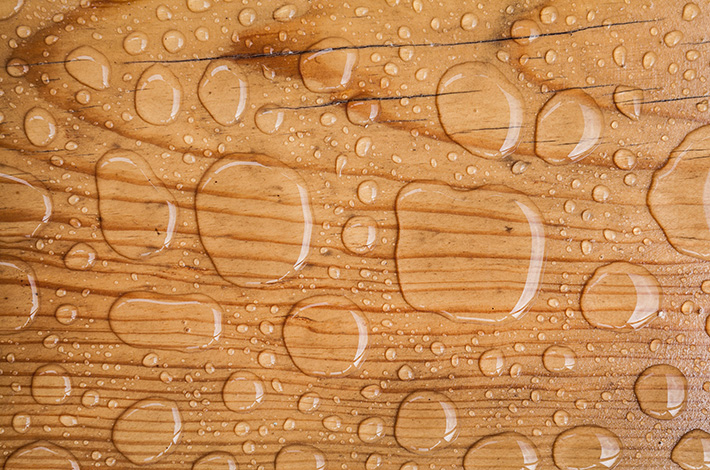

Timber Borer Treatment
This article will discuss the problem of wood borer, how it occurs and timber borer treatments. We will focus this specifically with Radial Timber products including the Natural Edge Weatherboard, Board and Batten, Shiplap, Screen Boards and Decking. We will discuss what you can do to prevent or treat an infestation.
What is Timber Borer Damage?
Wood borer damage is caused by insects; they’re a flying beetle. While it is not the adult beetle that causes the damage, it is the juvenile or larvae part of their life cycle that does. Borer starts out life when the adult beetle lays its eggs on the growing wood of the tree. Quite often, this is in some minor fault in the living tree, an existing borer hole, or just under the bark. The eggs can lay dormant for years or even decades, waiting for the conditions to be just right. They attack living timber in a tree, but mainly during the spring and summer when it’s warm.
Once they hatch from the egg as larvae, they start feeding on timber and create “galleries” of holes.


This continues until the insect enters the pupal stage, where it is transformed into an adult. Once this cycle has finished, the adult beetle breaches the timber surface. This results in that familiar pin hole. Quite often, they leave behind a tell-tail sign of fine dust around those holes. New holes and dust, is a great indicator of recent borer activity.


What part of the tree does Borer attack?
Usually, borer prefers to attack the sapwood of a tree but will attack heartwood, depending on the conditions it finds itself in when it hatches. If the borer egg has been dormant for a long time, the sapwood it was laid in has turned into heartwood as the tree grows. The borer has to eat its way out. This is why you can occasionally see evidence of borer galleries in the product supplied by Radial Timber Sales. However, most species of borer attack the tree during its life and will not likely continue into the future. This is true for species such as pinhole or longicorn borer.
However, there are one species of borer that can continue to attack the sapwood exclusively after the tree has died. This beetle is Anobium borer, also known as Powder Post borer. They leave distinct traces of powder around or on the ground under the exit holes, hence their common name. This beetle attacks dead sapwood of some species that contain which starch levels.


What Timber Borer Treatments are available?
If you do notice new borer holes within your Radial Timber product, especially with new dust (which will be Anobium borer attacking the sapwood only), you can easily treat to prevent further occurrence. There are a number of commonly available treatments that can be used to suit most situations. We’ll discuss two Preschem products which are registered with the APVMA, available through Radial Timber Sales.

Clear Wood Preservative is a bush on, solvent-based timber preservative by Preschem. Clear Wood Preservative is a general-purpose timber preservative, that contains both a fungicide and an insecticide. The insecticide is called Permethrin. Clear Wood Preservative will soak in up to 3-4mm depth and kill the emerging adult borer quickly. Clear Wood Preservative goes on clear and dries clear too. Once dry, you won’t know it’s there, even on grey weathered timber. If you have a small needleless syringe, you can also inject Clear Wood Preservative in to the borer hole to kill any other active borer that may still in the galleries under the surface.
Take a photo of the affected area to keep a record, so you can determine if there is any new borer activity. Re-treat as required.
- Dual effect timber preservative
- Easy to apply by brush, roller or spray
- Low toxicity
- Fast drying
- Prevents fungal decay AND kills borer and insects
- Dries clear even on grey weathered timber
- Lasts about 6-12 months fully exposed to the weather
- Is only effective on unsealed (unpainted) timber or timber with an oil based “decking oil” type finish like Radial Timber Sealer or Aussie Clear/Aussie Clear Light
- You will notice a kerosene like odour for 2-3 days after application.

No-Rot Gel is another excellent Preschem product that can be used to treat borer. This is water based diffusible timber preservative that contains Boron and Benzalchonium Chloride. Both ingredients are fungicides that prevent decay. But boron has a dual functionality in that it is also an insecticide. No-Rot Gel is a diffusible, water based product. It will diffuse into hardwoods by up to 10-15mm. This creates a larger treatment zone, that’s perhaps more likely to stop borer deeper within a board.
- Dual effect timber preservative and insecticide
- Brush on wood preservative
- Low toxicity, low odour, water-based product
- Can penetrate up to 10-15mm into hardwood when applied correctly
- Prevents fungal decay and localised insect attack
- As long as the timber remains dry, the boron salt will not degrade. This means the timber will be protected as long as the timber remains dry.
- Can be painted over with oil or water-based paint.
- No-Rot Gel is easily flushed away with water. It would have limited life in timber when exposed directly to rain and not is left unsealed. Note: this may not necessarily be an issue if you just wish to kill the borer infestation and want maybe 6-9 months protection
- Is not suitable to use in conjunction with Aussie Clear, Aussie Clear Light or Radial Timber Sealer or any other true penetrative oil based timber finish
- While it will not stain or significantly darken new timber, it will darken grey weathered timber for several weeks or months until the solvent is flushed out by rain. It will look similar to a wet power pole until it does.
Some Related Images of Timber features and its issues:





